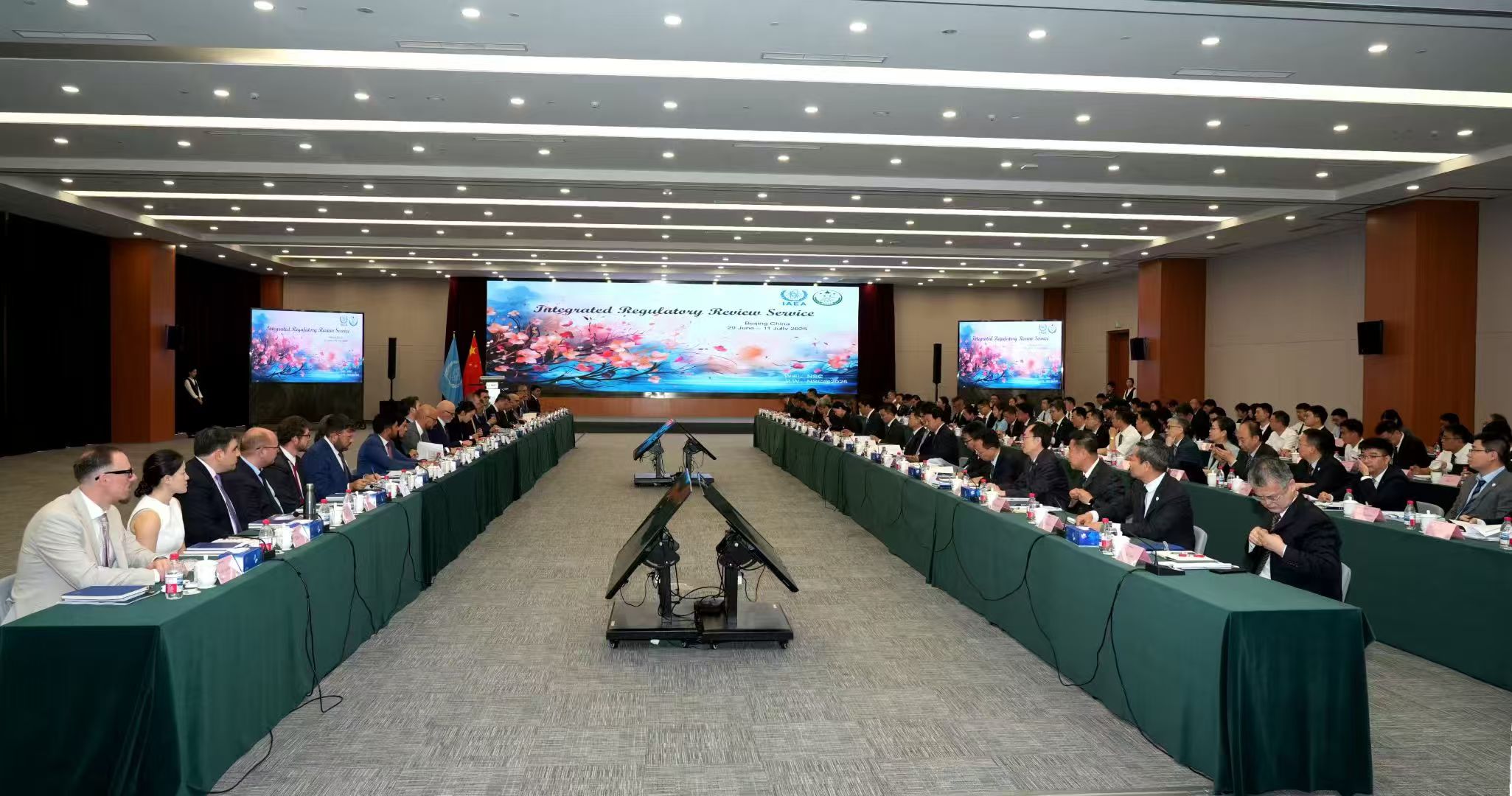site:Detail
IAEA Highly Commends China’s Nuclear and Radiation Safety Regulation
[11 July 2025] Source: Ministry of Ecology and Environment
From 29 June to 11 July 2025, at China’s invitation, the International Atomic Energy Agency (IAEA) conducted an Integrated Regulatory Review Service (IRRS) mission on nuclear and radiation safety regulation. The team praised China’s performance and identified a number of good practices that can be promoted internationally, announcing the findings at a joint press briefing after the mission.

IRRS is one of the IAEA’s most influential peer-review services. Drawing on the latest IAEA safety standards, it provides member states with recommendations to help continuously improve national nuclear and radiation safety regulatory systems. The review team comprised 20 senior regulators from 17 countries, four IAEA staff members and one observer. Over 12 days they carried out a comprehensive, in-depth and objective assessment covering all facets of China’s system: government and regulatory body responsibilities; licensing, inspection and enforcement; regulatory development; emergency preparedness and response; radiation sources; research reactors; nuclear power plants; fuel-cycle facilities; radioactive-waste management; transport of radioactive material; decommissioning; occupational, medical and public exposure; and interfaces between nuclear safety and security.
The team expressed strong appreciation for China’s achievements, commending the Chinese Government for aligning with IAEA safety standards. It concluded that “the Ministry of Ecology and Environment (National Nuclear Safety Administration, NNSA) is a robust, effective and reliable regulator that has made continuous and notable progress in ensuring nuclear and radiation safety, establishing an effective regulatory framework and fostering a strong nuclear-safety culture.”Team leader Mark Foy, former Chief Executive and Chief Nuclear Inspector of the UK Office for Nuclear Regulation, noted, “With China’s nuclear-power programme expanding rapidly, regulatory staffing will need to be significantly increased in the coming years. China’s innovative use of technology to enhance regulatory effectiveness is a model for others to follow.”
The team highlighted three good practices that merit adoption by other countries:
1. Regular high-level exchanges among senior representatives across the entire nuclear-industry chain to keep domestic and international safety developments aligned and drive continuous improvement.
2. Proactive development and application of artificial-intelligence tools to enhance regulatory efficiency, safety and innovation.
3. Deployment of big-data and real-time monitoring technologies to create integrated data platforms that strengthen safety analysis and support timely, effective decision-making by regulators and stakeholders.
The team also offered a series of constructive recommendations that will help the Chinese Government further raise the level of nuclear and radiation safety regulation, accelerate the development of a modern regulatory system and achieve a virtuous cycle of high-level safety and high-quality nuclear-sector development.
During the mission, the team held multiple meetings with MEE/NNSA staff and senior officials from the China Atomic Energy Authority, the National Health Commission and the National Energy Administration. Site visits included a nuclear power plant, research reactor, fuel-cycle facility, radiation-source facility, radioactive-waste-management facility, transport facility and hospital, where they engaged with management and front-line personnel. The two sides also conducted in-depth discussions on the impact of rapid AI development on regulation and on the human-resource challenges arising from China’s growing reactor fleet, achieving fruitful outcomes.